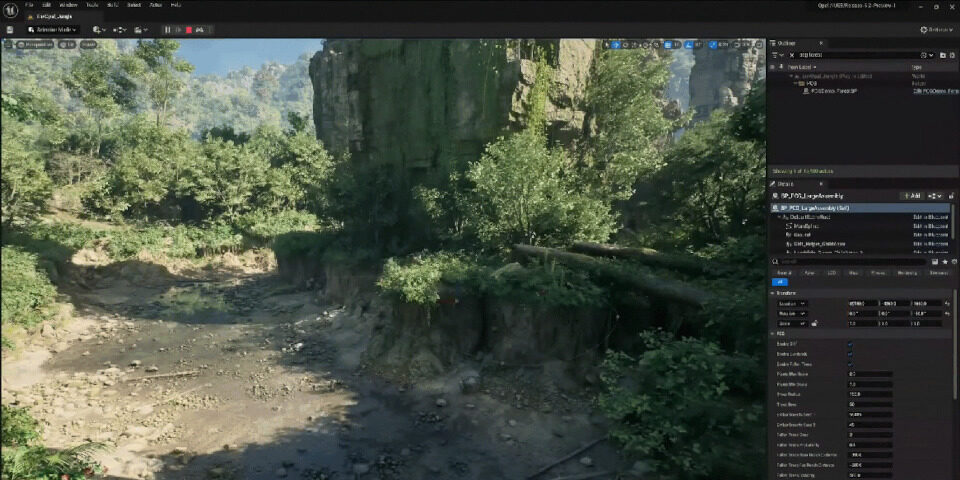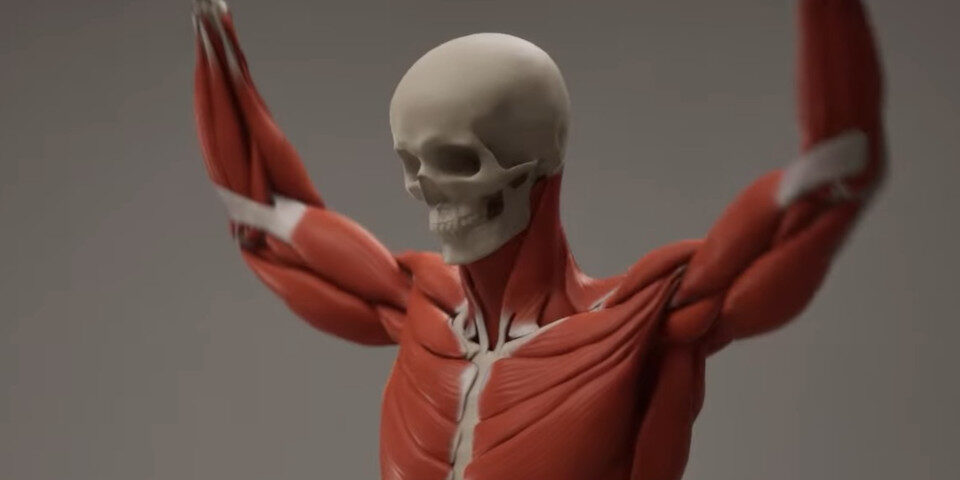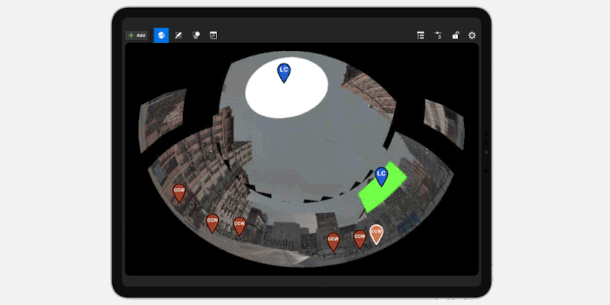Unreal Engine 5.2: five key features for CG artists
Epic Games has released Unreal Engine 5.2, the latest version of the game engine and real-time renderer.
The release lays the foundations for two major new toolsets: the Procedural Content Generation Framework (PCG), for populating large scenes inside UE5, and Substrate, a modular material-authoring system.
Other changes include Chaos Flesh, a new real-time muscle and soft body simulation system, support for simulation caching in the Niagara effects toolset, and updates to Nanite, Lumen and the path tracer.
As usual, there are smaller changes throughout Unreal Engine’s key toolsets, including modelling, UVs, texturing, lighting, animation, physics and rendering, plus new features for virtual production and mixed reality projects, updates to the Datamsith toolset and USD workflows – and native Apple Silicon support.
To save you wading through thousands of words of release notes, we’ve rounded up five of the key new features in Unreal Engine 5.2 for CG artists, as opposed to programmers.

1. PCG: new tools for populating large open worlds
One of the biggest new features in Unreal Engine 5.2 is the Procedural Content Generation Framework (PCG), an experimental toolset for populating large scenes inside Unreal, without the need for external tools.
According to Epic, the PCG lets artists “define rules and parameters to populate large scenes with Unreal Engine assets of [their] choice, making the process of creating large worlds fast and efficient”.
It includes both in-editor tools, including a new node graph and a set of operators, and a runtime component.
Workflow is interactive, with changes made in the node graph editor updating a project in real time.
At the time of writing, the documentation for the PCG doesn’t seem to be live, but you can read a technical overview on the Unreal Engine public roadmap and find more details in this video from GDC 2023.

2. Substrate: new modular material-authoring framework
Another key work-in-progress toolset is Substrate, the new material authoring system introduced for early testing in Unreal Engine 5.1, where it was known as Strata.
When enabled, it replaces Unreal Engine’s fixed shading models with a modular multi-lobe framework that provides a wider range of parameters to control the look of the materials authored.
The biggest changes will be to layered materials, with Substrate making it possible to create multi-layered looks: for example, dust on top of a clear coat material like car paint.
Although Substrate is computationally intensive than the fixed shading models it supersedes, performance “scales according to complexity … with legacy materials having a similar cost [to] before”.
3. Chaos Flesh: real-time soft body simulation
Other new features include Chaos Flesh, a real-time soft body simulation system that extends Unreal’s Chaos physics toolset from destruction effects and rigid body dynamics to deformable objects.
Although most of the current demos are for non-organic objects like car tyres, Chaos Flesh is designed for tissue simulation, particularly the deformation of a character’s muscles during skeletal animation.
Workflow involves converting the object to be deformed into a tetrahedral mesh, with UE5 performing the simulation on low-res geometry at runtime, using results from a cached high-res sim to increase fidelity.
Chaos Flesh supports geometry streamed in via Nanite, Unreal Engine’s new virtual geometry system, and supports interaction between soft bodies and the surrounding environment, controllable via Blueprints.

4. Updates to existing toolsets: Nanite, Lumen, ML animation, Niagara and the Path Tracer
Among Unreal’s existing toolsets, Nanite itself has been extended, with new features including support for custom depth and stencil maps, lighting channels, and a global clip plane.
Lumen, Unreal Engine’s real-time global illumination system, gets better support for thin geometry, like folds in clothing and body parts like ears and noses, and better integration with hair grooms.
Animators get updates to the ML Deformer, the AI-trained secondary motion system introduced in Unreal Engine 5.1, with a new sample scene available as a free download from the Unreal Engine marketplace.
The machine learning cloth deformation system gets improved accuracy and performance.
VFX artists using Niagara, Unreal Engine’s particle-based effects system, get support for simulation caching, making it possible to store and reuse simulation results, and a new CPU-based Decal Renderer.
For offline rendering, Unreal Engine’s Path Tracer gets support for spline meshes and mesh decals, better subsurface scattering, and the option to render objects as holdouts without the need to switch materials.

5. Virtual production: updates to VCam, nDisplay and an upcoming iOS ICVFX editor
For virtual production work, Unreal Engine 5.2 features further updates to the VCam system, including the option to control multiple virtual cameras from a single editor instance.
nDisplay, for output to multi-display set-ups like LED walls, gets experimental support for SMPTE 2110.
And the desktop in-camera VFX editor will soon be joined by a new iPad app, making it easier to control virtual environments on set, although at the time of writing, it isn’t available in Epic’s iOS app store listing.
More changes to asset development, scene layout, rendering and pipeline integration
Unreal Engine 5.2 also includes a lot of smaller updates throughout the engine’s key toolsets, plus updates to USD workflows and to the Datasmith toolset for the import of CAD data and DCC models.
You can find the full list of changes via the links at the foot of the story.
System requirements and availability
Unreal Engine 5.2 is available now for 64-bit Windows, macOS and Linux. The release introduces native Apple Silicon support, which should improve performance of the Unreal Editor on current Macs.
Use of the editor is free, as is rendering non-interactive content. For games developed with the engine, Epic takes 5% of the gross royalties after the first $1 million generated by a title.
Read an overview of the features in Unreal Engine 5.2 on Epic Games’ blog
Read a full list of new features in Unreal Engine 5.2 in the online release notes
